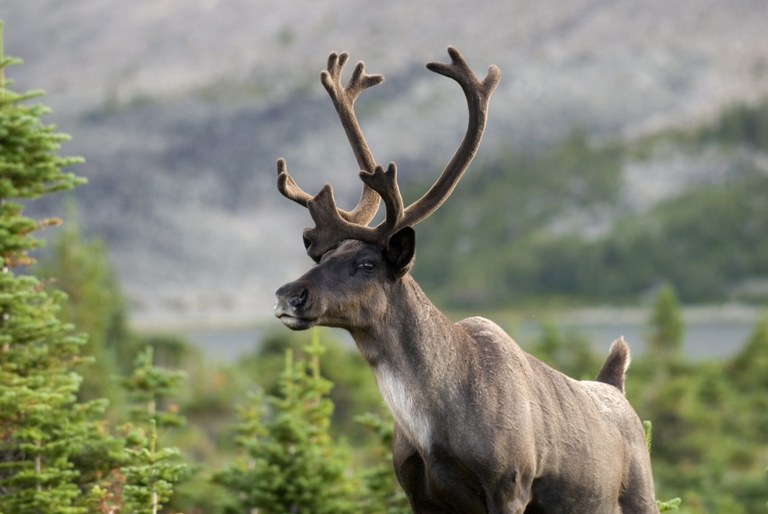MEDIA RELEASE — Quintessentially Canadian, caribou are fascinating, yet at-risk, animals. A recent genomic study provides fascinating new insights into behaviours that significantly advance our understanding of how to conserve caribou.
This new research not only shows genetic reasons for these differences, but that these changes vary even within a single herd, impacting whether or not caribou migrate, how they adapt to habitat and climate, and other behaviours.
A five-year international study, led by biologists at the University of Calgary, identifies a natural evolutionary mechanism in caribou that preserves and ensures long-term genetic and behavioural diversity of the species in various habitats in western North America.
This is the first study of its kind with caribou and the first to confirm the gene-driven balancing selection mechanism in a wild species in nature, says Dr. Marco Musiani, the paper’s senior author.
As habitat fragmentation makes caribou populations more and more isolated, there is greater danger of losing the genetic and behavioural diversity they need to survive, says Musiani.
“Our research clearly shows that populations harbor different genes that are selected for in different environments and that within populations multiple genes and behaviours can be selected for at the same time,” he says. “For example, the Rocky Mountains have caribou that migrate and caribou that don’t. Conservation planning should include viable and interconnected caribou populations with these characteristics across the Rockies.”
In particular, Musiani’s work in the southern Rockies show these caribou herds are distinctive because they migrate and have unique genes.
In early 2019, caribou made headlines when the final three members of the last transboundary U.S.-Canada herd to roam the lower 48 states were relocated from the wild to breeding facilities.
“What happened with the South Selkirk herd was an early warning sign,” Musiani says. “Our research underlines the roles that habitat, climate, genes, and behaviour play in the long-term success of caribou from Montana through British Columbia and Alberta, right up to northern Yukon and Alaska.”
Yellowstone to Yukon Conservation Initiative (Y2Y) works on improving habitat connectivity on a wide stretch of geography from Yellowstone to Yukon and is increasingly concerned with the state of caribou across the region, including the recent news in southern B.C. of disappearing herds.
So far habitat protection for the species has been limited. Musiani’s study is on a broad scale that demonstrates the genetic need to link habitat for herds, says Y2Y’s conservation scientist Dr. Aerin Jacob, who was not involved with the study. This contrasts the heavy policy focus on herds as the unit of conservation and suggests we need to be thinking also about connectivity among herds.
“This caribou genome research shows why we need to connect habitat between herds. Only habitat protection and connectivity will ensure that caribou are here for the long-term — it’s time to take action. We will continue to work with governments and land-use planning to ensure that cutting edge research like this is considered in meaningful habitat protection for caribou,” she says. This is especially timely as British Columbia just wrapped up a comment period on two draft agreements for caribou recovery across the province. Whether herds migrate or not, their behaviour plays a key role in the overall health of caribou on the continent.
“Both migratory and non-migratory characteristics are maintained through balancing selection, and together they contribute to the long-term genetic and behavioural diversity of the species and to its adaptation to habitat and climatic conditions,” says Musiani. “These genetic and behavioural differences are critical to caribou survival.”
Background:
The research paper “Genomics, environment and balancing selection in behaviorally bimodal populations: the caribou case,” is published in the June 2019 issue of the journal Molecular Ecology: https://doi-org.ezproxy.lib.ucalgary.ca/10.1111/mec.15039
For further comment please contact:
Kelly Zenkewich, Yellowstone to Yukon Conservation Initiative communications manager, kelly@y2y.net


